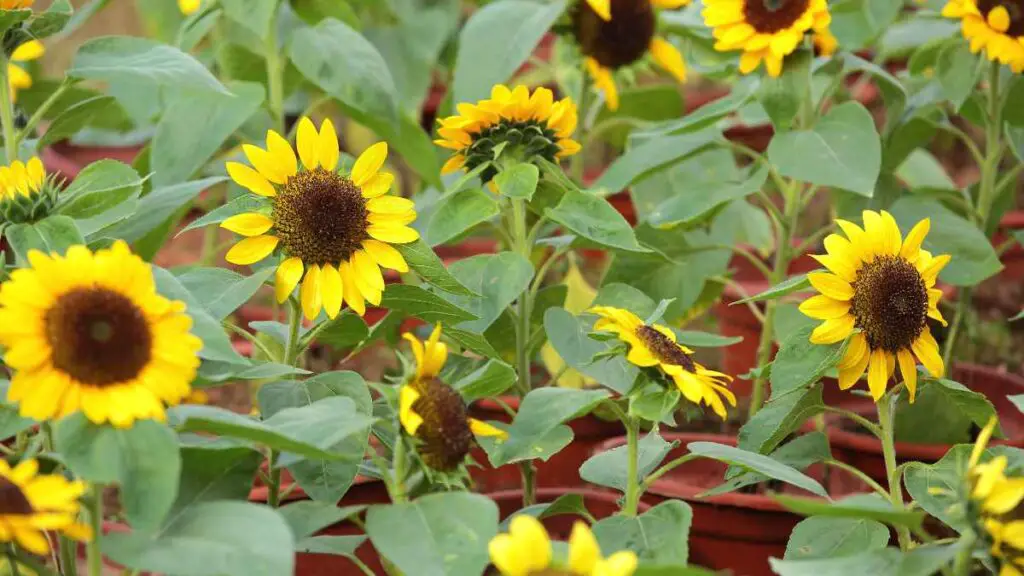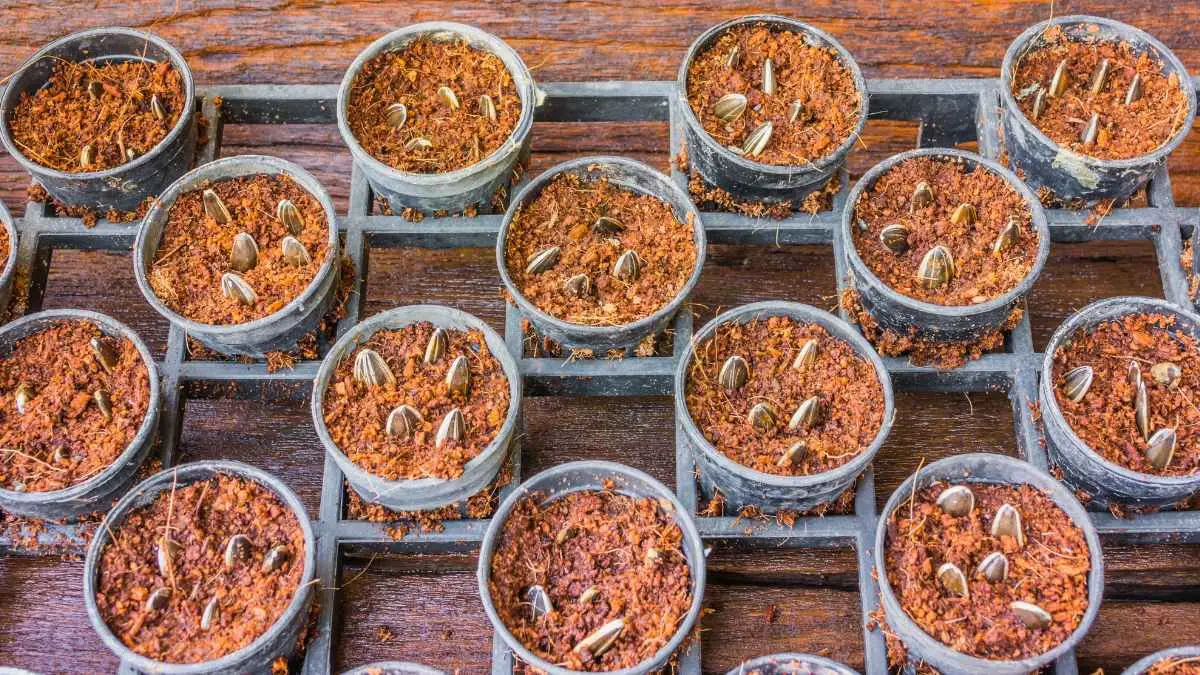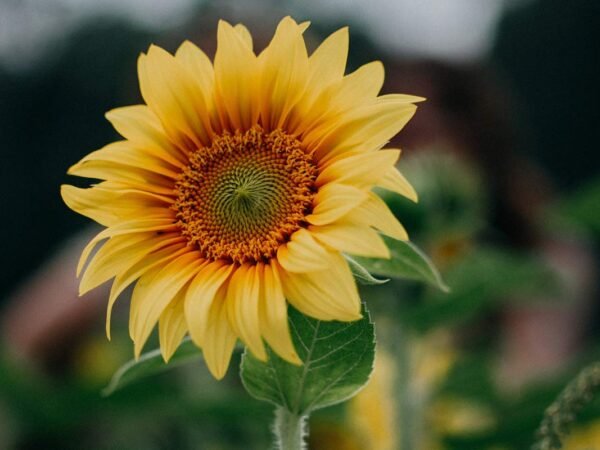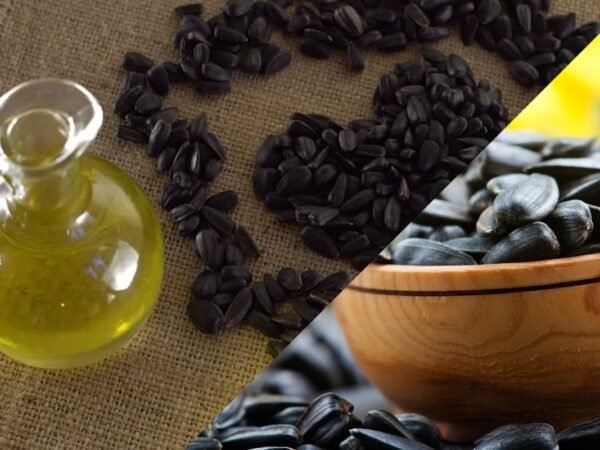Growing sunflowers in pots is simpler than you might think. Let me, a garden specialist expert, guide you through the process with confidence, ensuring you can enjoy vibrant blooms right on your doorstep.
Sunflowers are versatile plants that thrive in containers, bringing a touch of sunshine to any space. Choose a large pot with drainage holes, fill it with well-draining soil, and plant your sunflower seeds about 1 inch deep. Place the pot in a sunny spot and water regularly. Let me, a garden specialist expert, guide you through the process with confidence, ensuring you can enjoy vibrant blooms right on your doorstep.
Ready to embark on your sunflower-growing journey? Stay tuned for more tips and tricks to ensure your potted sunflowers reach their full potential and dazzle with their beauty.
Key Takeaways
- Choose sunflower varieties wisely: Select sunflower varieties that suit your space and sunlight availability.
- Pick the right pots: Ensure pots have proper drainage holes and are large enough for sunflower growth.
- Prepare soil effectively: Use well-draining soil and add compost for nutrients before planting sunflower seeds.
- Follow sowing steps: Plant sunflower seeds at the right depth, spacing, and keep soil moist until germination.
- Meet sunlight and watering needs: Place pots in a sunny spot and water regularly, allowing the soil to dry slightly between waterings.
- Provide proper care: Monitor growth, support tall stems if needed, and protect sunflowers from pests and diseases.
Choosing Sunflower Varieties
Best for Pots
Choose sunflower varieties that suit pot planting, considering size, height, stability, and drainage needs.
- Opt for sunflowers compatible with pots in terms of size and growth.
- Ensure the selected sunflower variety can thrive in a confined space like a pot.
- Pick varieties that are suitable for container gardening to promote healthy growth.
Dwarf Types
Select dwarf sunflower varieties for pot planting; examples include Teddy Bear and Firecracker, ideal for small spaces.
- Dwarf sunflowers like Teddy Bear and Firecracker are perfect choices for pot planting.
- These compact varieties are suitable for indoor gardening due to their manageable size.
- Opting for dwarf types ensures successful growth in limited space, such as pots or containers.
Giant Varieties
Avoid giant sunflower varieties when planting in pots due to their excessive height that surpasses 6 feet.
- Giant sunflowers can reach heights over 6 feet, making them unsuitable for pot cultivation.
- Select smaller varieties to ensure they fit well within the constraints of a pot or container.
- Choosing smaller variants promotes healthier growth and prevents overcrowding in confined spaces.
Selecting the Right Pots

Ideal Size
When planting sunflower seeds in pots, choose pot sizes according to the expected height of the plant. Matching pot size to plant height is crucial to prevent overcrowding and root restriction. Opt for larger pots for taller sunflower varieties.
Material Considerations
For planting sunflower seeds, consider using whiskey barrels, terracotta, or plastic decorative pots. Ensure that the containers have good drainage and stability for healthy sunflower growth. The material of the pot can impact water retention and root development positively.
Preparing the Soil
Soil Type
Sunflowers require a quality potting mix that is nutrient-rich to support their growth. This type of soil provides the necessary nutrients for sunflowers to thrive. Including perlite in the soil mixture is essential as it aids in proper drainage, preventing waterlogging that could harm the plants. Choosing the right soil type is a critical factor in ensuring the overall health and development of sunflowers.
Nutrient Mix
To promote optimal growth, it is crucial to provide sunflowers with a nutrient-rich soil mix. Sunflowers are known as heavy feeders, requiring a well-balanced nutrient mix to support their development. Fertilizing the soil with appropriate nutrients helps in meeting the nutritional needs of sunflowers throughout their growth stages. Ensuring a nutrient-rich environment is key to fostering healthy and vibrant sunflowers.
Sowing Seeds Step-by-Step
Planting Depth
Plant sunflower seeds 1 to 2 inches deep in the pot. Ensuring the correct depth is crucial for germination and root establishment. Adjust based on the sunflower variety.
Spacing Tips
Maintain a spacing of 3 inches between sunflower seeds in the pot. Adequate spacing allows each seedling to get enough sunlight and nutrients. Modify based on the sunflower variety's mature size.
Sunlight and Watering Needs
Daily Sunlight
Sunflowers need 6 to 8 hours of direct sunlight daily for photosynthesis and plant health. Position pots strategically to maximize sun exposure for optimal growth.
Watering Schedule
Water sunflower seeds daily to maintain soil moisture until germination. Adjust watering frequency based on soil moisture levels and weather conditions. Adequate watering is crucial for seed germination and early growth stages.
Growing Tips
Thinning Seedlings
When sowing sunflower seeds in pots, it's crucial to remove weaker seedlings to enable the stronger ones to flourish. Thinning out seedlings helps prevent overcrowding, ensuring that each plant gets sufficient nutrients and space. By promoting healthy growth through thinning, you give your sunflowers the best chance to thrive.
To support the growth of sunflowers, consider incorporating support structures such as stakes or trellises, especially for taller varieties. These structures play a vital role in preventing the bending or breakage of stems when the flowers reach maturity. Installing support early on is essential to avoid any damage to the plants as they grow.
Support Structures
- Stakes or trellises can provide sturdy support for tall sunflower varieties.
- Supporting sunflowers with these structures helps prevent damage from heavy flower heads.
- Early installation of support structures is key to ensuring proper growth and development.
Fertilizing and Maintenance
Fertilizer Types
Sunflowers thrive with nitrogen-rich fertilizers to support healthy growth and vibrant blooms. Nitrogen is crucial for leaf development, overall plant vigor, and robust stem formation. Applying fertilizers in the correct dosage ensures optimal nutrition absorption by sunflowers.
Pruning Tips
Pruning plays a vital role in maintaining sunflowers' health and encouraging continuous blooming. By deadheading fading blooms, you stimulate the plant to produce more flowers. Regularly removing spent parts redirects energy towards new growth, enhancing the plant's appearance and longevity.
Pest and Disease Management
Common Pests
Watch out for common pests like aphids and caterpillars on sunflowers. Monitor plant leaves for signs of pest infestation. Take preventive measures by using natural remedies or insecticidal soaps to control pest populations.
Prevent fungal diseases by avoiding overhead watering when sowing sunflower seeds in pots. Ensure proper air circulation around sunflowers to reduce the risk of diseases. Treat early signs of disease with appropriate fungicides to protect plant health.
Harvesting Sunflowers
Signs of Maturity
Spot fully developed flower heads with dried petals for mature sunflowers. These sunflowers display sturdy stems and vibrant colors when ready for harvest. Harvest when the back of the flower head turns brown and seeds look plump.
Harvesting Seeds
Collect seeds from dried, brown flower heads for optimal seed quality. After removal, dry seeds further before storing to prevent mold. For future use, store harvested sunflower seeds in a cool, dry place.
Closing Thoughts
After following the steps outlined in this guide, you're well on your way to successfully growing sunflowers in pots. Remember to choose the right variety, pots, and soil for optimal growth. By sowing the seeds correctly and providing adequate sunlight and water, you'll soon see your sunflowers thriving. Regular fertilizing, maintenance, and vigilant pest management will ensure a bountiful harvest.
Now that you have all the tools and knowledge at your disposal, it's time to roll up your sleeves and get started on your sunflower potting journey. Embrace the process, enjoy watching your sunflowers grow, and don't forget to share your beautiful results with others who might benefit from this information.
Frequently Asked Questions
How do I choose the right sunflower variety for planting in pots?
When selecting sunflower varieties for pot planting, consider dwarf or miniature varieties like 'Sunspot' or 'Music Box' that are suitable for container growth due to their compact size and manageable height.
What are the key factors to consider when selecting pots for sowing sunflower seeds?
Choose pots with good drainage holes, at least 12 inches deep and wide, to accommodate sunflower root growth. Opt for sturdy materials like terracotta or plastic that can withstand the plant's weight and size.
How should I prepare the soil before sowing sunflower seeds in pots?
Use well-draining potting mix enriched with organic matter. Ensure the soil is loose and aerated by adding perlite or sand. Prioritize soil pH around 6.0 to 7.5 for optimal sunflower growth.
What is the recommended step-by-step process for sowing sunflower seeds in pots?
Fill the pot with prepared soil, plant seeds 1 inch deep, water gently, and place in a sunny spot. Keep the soil consistently moist but not waterlogged until seedlings emerge, usually within 7-14 days.
How can I ensure proper sunlight and watering needs for sunflowers grown in pots?
Place your potted sunflowers in a location receiving at least 6-8 hours of direct sunlight daily. Water deeply when the top inch of soil feels dry, ensuring excess water drains out to prevent root rot.
Image Source: Paid image from CANVA




